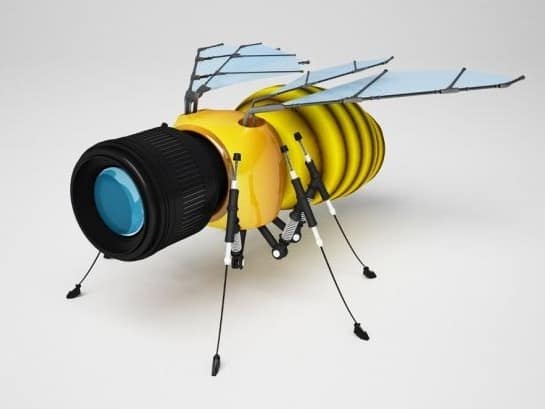
 Pollinating drones? It’s true that science takes strange twists and turns along the way to innovation.
Pollinating drones? It’s true that science takes strange twists and turns along the way to innovation.
A couple of cases in point of the bee-related variety: as most of us know, bee colonies are in sharp decline the world over, with researchers currently putting the blame for what’s known as colony collapse disorder on factors such as a parasitic mite called the varroa, the proliferation of neonicotinoid pesticides and just plain exhaustion from overuse by agribusiness.
As roughly one-third of crops are pollinated by bees and other creatures (but mostly bees), their health and safety is of high concern to us humans. In Canada, the federal Species at Risk Public Registry lists six bee species that are either endangered or threatened.
But while we could try combating bee declines by addressing their root causes, we could also be creative about the whole thing and come up with ways of pollinating plants without the need of the bees in the first place. (I know, I support the former, too, but let’s hear them out.)
Enter Eijiro Miyako, chemist at the National Institute of Advanced Industrial Science and Technology in Tokyo, Japan, who, ten years ago, was reportedly trying to create an electrically conductive fluid and ended up with a sticky, messy gel, unsuitable for his purposes. Literally shelving the project for a decade, Miyako recently opened a storage cabinet to find the gel sitting in the open air and looking just as it did ten years earlier. Taking it out for a second look, Miyako found the gel to be superbly adhesive, great at picking up motes of dust off the floor, which led the chemist to think about bees. And grains of pollen.
To test the bio-compatibility of his gel, Miyako painted ants with the ionic compound and watched as they wandered across a box of tulips, picking up pollen along the way. The new study argues for the applicability of the sticky gel by showing how it’s possible to take the gel, coat horsehairs with the stuff, attach the hairs to aerial drone robots and hover them on top of flowers to collect pollen. And what do you know, the process worked.
“Thus, the next logical step would be to explore the suitability of these materials in biological applications,” say the new study’s authors. “The final goal of our research is to develop innovative pollinators by using ionic liquid gel composites that exhibit various functionalities.”
Then, across the Pacific at the Savannah College of Art and Design in Georgia, a professor challenged students to come up with good ideas to accelerate plant growth, spurring on enterprising student Anna Haldewang who, upon learning about bees and their downward trajectory, decided to create her own flower-pollinating drone. Aptly called Plan Bee, the flying gadget is still in the early stages of development but is being engineered to pull pollen from a plant and then deposit it into another for cross-pollination.
“I would love to see people use it in their backyards and even create custom gardens with it,” says Haldewang, to CNN. “With an actual bee, it’s so small you don’t notice it and how it’s pollinating flowers. With the drone you can see how the process works.”
Time will only tell if and when Miyako and Haldewang will be joining forces.
Leave a Reply
You must be logged in to post a comment.



 Share
Share Tweet
Tweet Share
Share




Comment